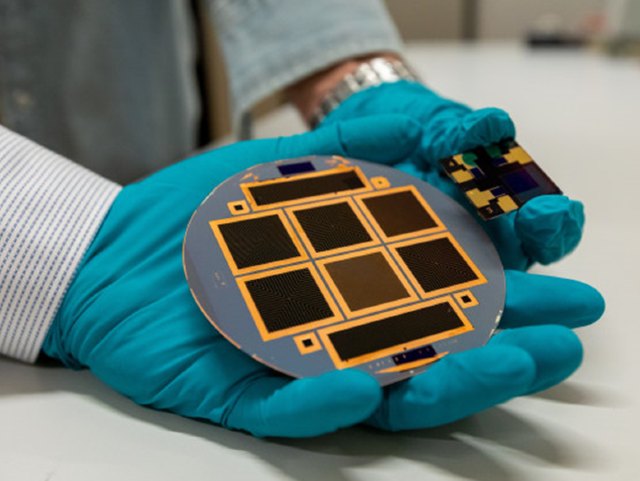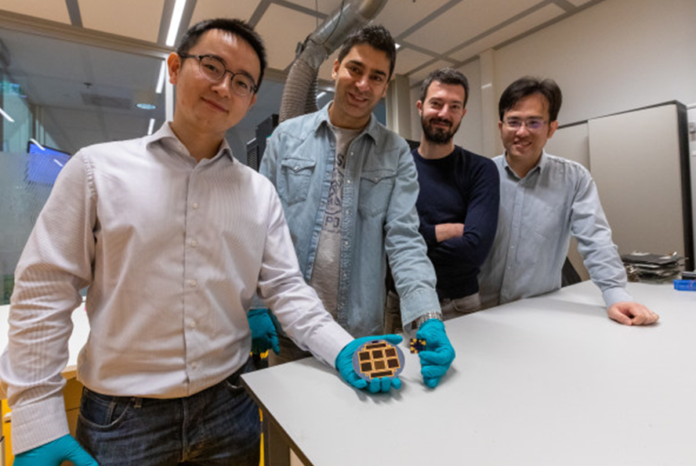
Claimed to be an industry-first, four-terminal perovskite/silicon tandem devices with a certified top cell have passed the barrier of 30% efficiency.
The result was achieved by combining the emerging perovskite solar cell with conventional silicon solar cell technologies. The independently certified perovskite cell features transparent contacts and is part of a tandem stack.
The results are the product of a collaboration between TNO (Netherlands Organisation for Applied Scientific Research), Eindhoven University of Technology, R&D firm imec and Delft University of Technology.
The partners teamed up to boost the conversion efficiency of tandem solar cells, thereby enabling more power per square meter and less cost per kWh.
According to the researchers, tandem devices can reach higher efficiencies than single junction solar cells because of a better utilisation of the solar spectrum.
The currently emerging tandems combine commercial silicon technology for the bottom device with perovskite technology: the latter featuring highly efficient conversion of ultraviolet and visible light and excellent transparency to near-infrared light.
In four-terminal (4T) tandem devices the top and bottom cells operate independently of each other which makes it possible to apply different bottom cells in this kind of device.
Commercial PERC technology as well as premium technologies like heterojunction or TOPCon or thin-film technology such as CIGS can be implemented in a 4T tandem device with hardly any modifications to the solar cells. Furthermore, the four-terminal architecture makes it straightforward to implement bifacial tandems to further boost the energy yield.

Involved researchers: Yifeng Zhao (TU-Delft), Mehrdad Najafi (TNO), Valerio Zardetto (TNO) and Dong Zhang (TNO)
“This type of solar cell features a highly transparent back contact that allows over 93% of the near infrared light to reach the bottom device. This performance was achieved by optimising all layers of the semi-transparent perovskite solar cells using advanced optical and electrical simulations as a guide for the experimental work in the lab,” says Dr. Mehrdad Najafi of TNO.
“The silicon device is a 20×20-mm2 wide, heterojunction solar cell featuring optimised surface passivation, transparent conductive oxides and Cu-plated front contacts for state-of-the-art carrier extraction,” says Yifeng Zhao PhD student at TU Delft, whose results have been recently peer-reviewed.
The silicon device optically stacked under the perovskite contributes 10.4% efficiency points to the total solar energy conversion.
Combined, 30.1% is the conversion efficiency of the non-area matched 4T tandem devices operating independently.
“Now we know the ingredients and are able to control the layers that are needed to reach over 30% efficiency. Once combined with the scalability expertise and knowledge gathered in the past years to bring material and processes to large area, we can focus with our industrial partners to bring this technology with efficiencies beyond 30% into mass production” says Prof. Gianluca Coletti, programme manager Tandem PV technology and application at TNO.